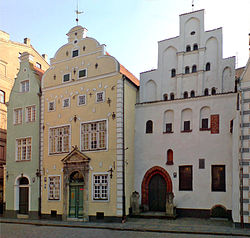History
Intergovernmental initiative
The European Heritage Label started as an intergovernmental initiative between 17 individual EU member states during a meeting in Granada, Spain on 28 April 2006. [1] Motivations for creating the initiative included the 2005 referendums in France and the Netherlands, which resulted in the two countries not ratifying a constitution for Europe. The initiative's main aim was to identify and designate sites which have played a key role in building a united Europe and to see those sites through a European, rather than national, viewpoint. [2]

The intergovernmental initiative connected both EU member states and non-member states such as Switzerland. [3] The participating countries’ heritage agencies awarded the Label to sites with cross-border or pan-European character. [4] The countries chose their own cultural assets, whether physical sites or more abstract traditions, meaning that the criteria for the Label varied per country. By 2010, 64 sites in 18 different participating countries had been awarded the intergovernmental label. [5]
Transformation into an EU initiative
On 20 November 2008, the Council adopted conclusions aimed at transforming the intergovernmental initiative into a Union action by inviting the Commission to submit to it a proposal for the creation by the Union of a European Heritage Label and to specify the practical procedures for the implementation of the project. [6] Public hearings and impact assessments were carried out, confirming the added value of EU involvement. In 2010, the European Commission announced the plans for the EU-wide scheme known as the European Heritage Label [7] and it was officially established on 16 November 2011. [8]






